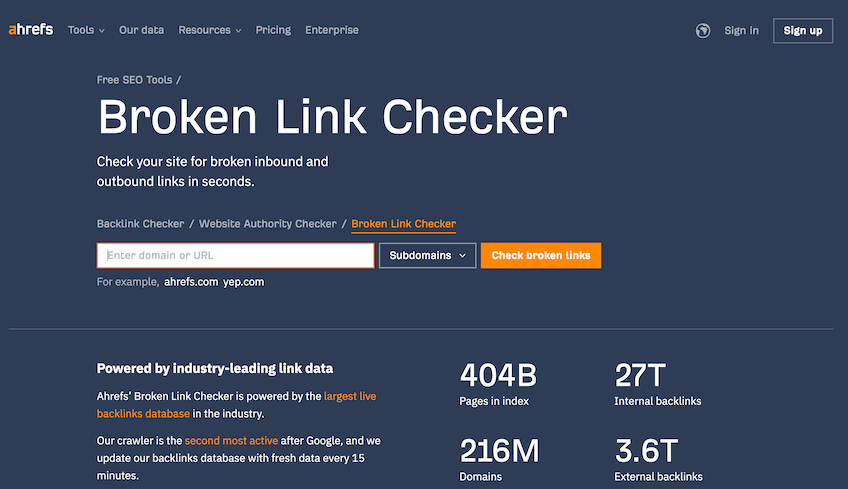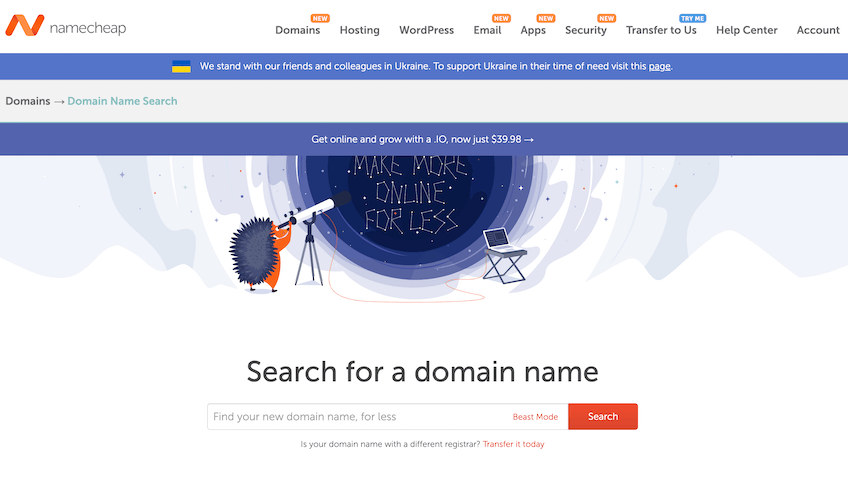No guide to link building would be complete without at least touching on a few grey hat strategies. And while some these stretch the limits of Google’s TOS (or outright violate them) you may have the risk tolerance for this kind of approach. In fact, some of the techniques in this guide—like paid directory link building—are Google approved.
But that’s not to say they won’t incur the search engine’s wrath in the near future. Like any grey or black hat link building strategy, use at your own risk.
Build a Blog Network
Your ideal link comes from a site closely related to yours with a ton of authority. And while guest posting and other white hat strategies can land you these killer backlinks, it’s sometimes easier to simply make them by building a blog network.
Find Old Link and Resource Pages
Buying aged, expired domains with hundreds of links pointing at them is the fastest way to build an authoritative blog network.
While you can compete with everyone and their mom for expired domains at GoDaddy Auctions, there’s a little-known technique for finding powerful expired domains that you can grab for the price of domain registration.
Use Google to find pages with long lists of links. The more links a page has the more likely it will have a broken link that points to an expired domain.
There are hundreds of search strings that you can use. Here are some examples to get your creative juices flowing:
- “keyword” + “links”
- “my favorite sites”
- “our corporate partners”
- “best jazz websites”
- site:.edu “helpful sites”
Limit your results to old pages that haven’t been updated in a while.
Go to one of the sites in the results, and out the page’s PR.
And check to see if it has a lot of OBLs (in this case you actually want a lot of OBLs).
Find Broken Links
You can use a tool like Ahrefs to find broken links.

Now the URLs of the pages you found in the first step.
You’re looking for a particular type of error: “No Such Host.” This means that the site isn’t even pointing to a working host, meaning it’s possible that the domain isn’t registered by anyone.
Then create a list in Excel or Google Sheets of all these domains.
Register Available Domains
Open the file in and find all of the pages with the “No Such Host” error. Then head over to a domain registrar and enter the domains that you found.
Namecheap is a great option, but you can use our list of the best domain registrars for alternatives to consider.

Some of these names might be taken, even if they’re on your list with no host. So be prepared to try 25 or so pages to find one solid broken link. But with a day’s work you can usually scoop up 5-10 expired domains with a solid link profile.
Set Up Your Blog Network
The key to creating an under-the-radar blog network is to minimize any footprint. This means hosting each site on a separate IP address, using private whois information and using a different theme on each site.
You can easily keep track of your network using Excel. Just set up a spreadsheet that includes fields for the domain name, the host, IP address and theme:
Now it’s just a matter of filling in the site up with unique content (and linking to your site of course!).
Tiered Link Building
One of the best ways to increase the power of your existing links is through tiered link building. While link pyramids, link wheels and other convoluted approaches are popular, they’re usually more trouble than they’re worth. Even worse, they tend to simply point junk links to links that are essentially worthless to begin with (like forum profile links or blog comments). A much more effective approach is to juice up your submission links, guest posts, and other high-quality tier-1 links with a single extra tier.
Create and Spin a Seed Article
To make sure our second tier gets indexed, we’re going to focus on contextual second tier links. And the easiest way to do that is to spin an original seed article using The Best Spinner. This program has the largest database of synonyms of any spinner software.
First, copy and paste your original article into the software.
You can click “Auto-Select Synonyms” and trust the software to spin the article for you. However, I prefer to hand spin the article so each version is actually readable. To do that, right click any word or phrase in the article.
And you’ll see a list of synonyms. Add as many as you can (as long as they make sense). Everything in the blue brackets are synonyms that will be used for your spun content.
Repeat until you find logical synonyms for the entire article.
Web Directories
Let’s face it: most web directories are completely worthless. However, there are still a few that pass trust and authority onto your site. Because there are so few that actually make a difference, it’s much better to submit to a handful of authoritative directories than to buy one of those services that promise to “Submit to 40,000 Directories!”
Here are a few of the directories worth submitting to:
- DMOZ
- Yahoo
- JoeAnt
- SoMuch
- FamilyFriendlySites
Get More Juice From Your Submissions
Most people submit their site to the first relevant category that they set their eyes on, which is a huge mistake. You can double the value of your directory link by choosing a category with the most PR.
For example, let’s say you were going to submit a business website to the link directory.
At first blush, the category Business Software may make sense to you.
But to get the most juice from your submission, find a page that makes sense for your site and has PR.
The Business Opportunities category might have a PR4, whereas business software might be N/A.
As long as your site makes sense for the category (even if it’s a bit of a stretch), you should always try to submit it to the category with the most authority.
Donation and Sponsorship Backlinks
Getting a dofollow link in exchange for a donation is a no-no from Google’s perspective. However, it’s something you may want to sprinkle into your white hat campaigns as it’s one of the most cost effective ways to get powerful, aged backlinks.
Here are some search strings to help you find these link building golden nuggets:
- “donate” + “add your link”
- “keyword” + “sponsors”
- “donate” + “links below”
- “corporate sponsors”
- “sponsors” + “link to your”
- “contributors list”
Look for a page that lists followed links to their sponsors.
Then donate (usually via PayPal) and get your link.
